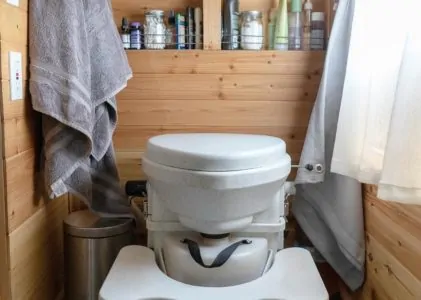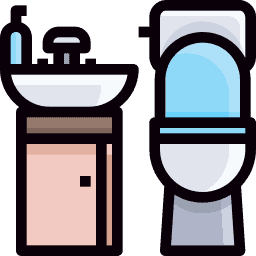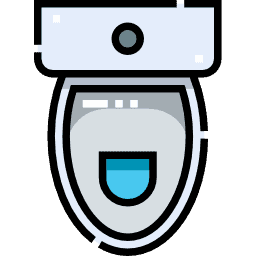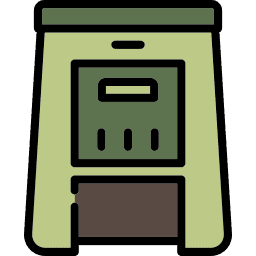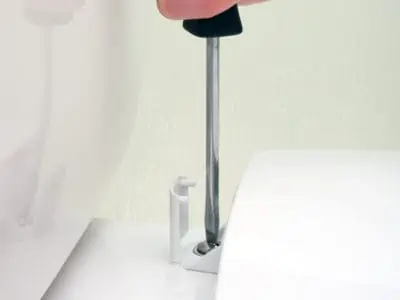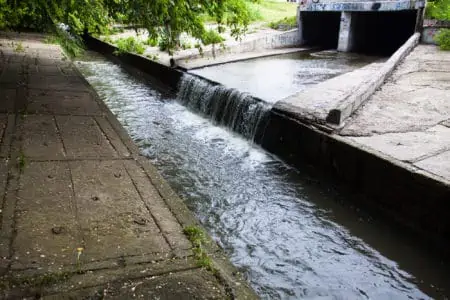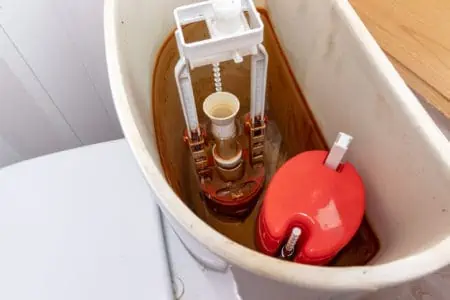A composting toilet is an eco-friendly way to reduce your water use while turning waste into natural fertilizer. As they don’t need to be plumbed in, they are also ideal for adding a toilet to your garden, an outbuilding, an RV, or a boat.
Composting toilets are very easy to install, so they are a great option for adding to your home or wherever else you need one. However, it is important to choose a toilet that will work effectively and is easy to maintain.
To help you find the right unit, we have reviewed seven of the best composting toilets that are currently available. We chose these toilets for their eco-friendliness, size, tank capacity, and whether or not they require any water to use.
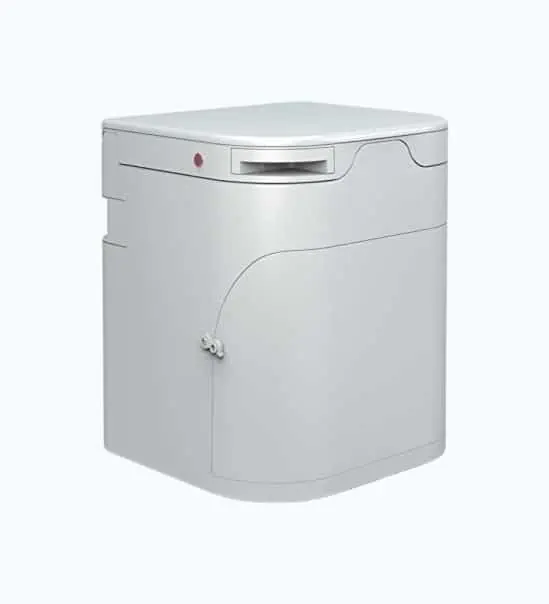
- Odor-free
- Made in the USA
- Features an electronic agitator
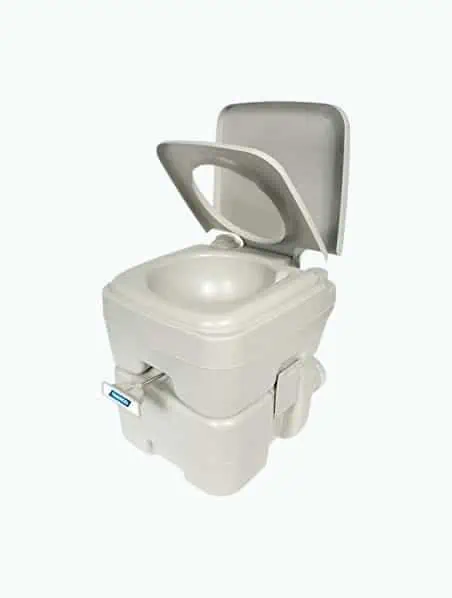
- Compact footprint
- Bellows-type flush pump
- Ideal for RVs
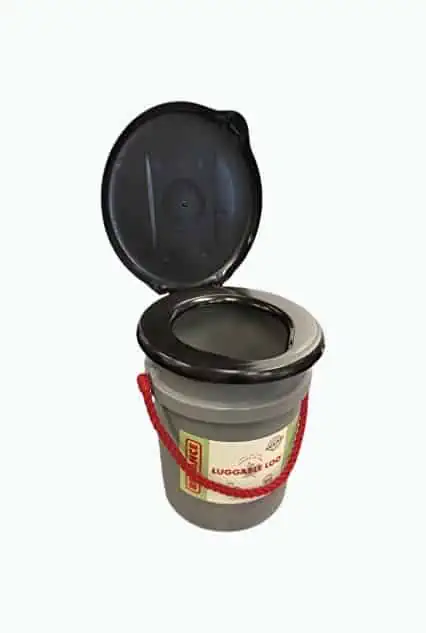
- Snap-on seat and lid
- Doesn't require any connections
- 20-liter capacity
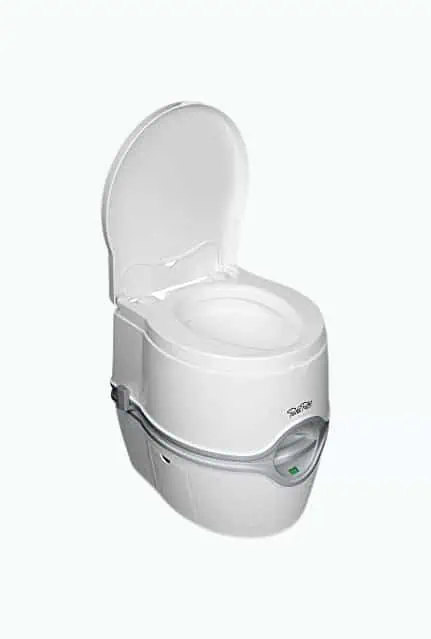
- Battery-operated flush
- 21-liter capacity
- Tank level indicator
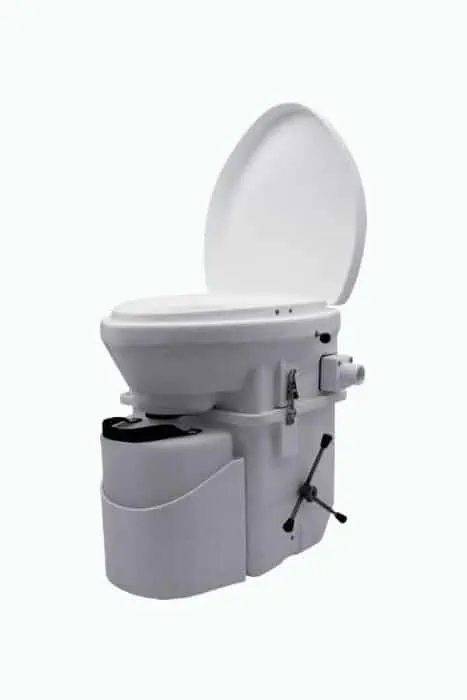
- Spider handle agitator
- 22-liter liquids bin
- Includes a 12-volt fan

- 5-year warranty
- Swedish design
- AC and DC compatible
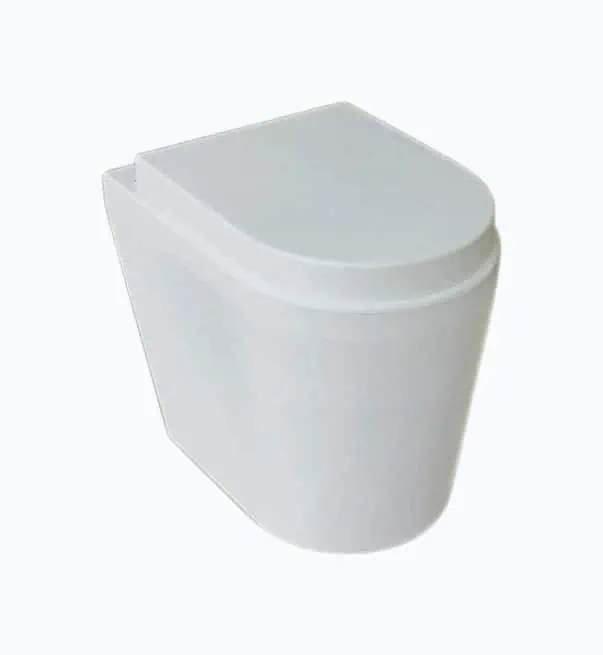
- Low maintenance
- No electricity required
- Compact design
Review Methodology: At Sensible Digs, we strive to provide you with thorough and unbiased analysis of the best composting toilets. Our professional team conducts hands-on tests, measures performance, and ranks products based on critical decision-making factors. We evaluate each product from a user’s perspective, focusing on criteria such as efficiency, ease of use, design, and environmental impact. We review and score each composting toilet, comparing them to benchmark standards and competitors. Our evaluations are backed by solid data, experience, and in-depth research, ensuring that our findings are reliable and trustworthy. We aim to help you make an informed decision by sharing these results and identifying what sets each product apart.
The Best Composting Toilets of 2024
With an increasing number of people looking to become more eco-friendly and even going off-grid, composting toilets are more popular than ever before. To help you choose from the many products that are available, we have reviewed seven of the best composting toilets you can buy today. We chose these toilets for their eco-friendliness, size, whether or not they separate waste, and any external connections they might require.
Ogo Composting Toilet
Best Composting Toilet for Odor
Ogo’s composting toilet is a very popular choice that works far more quickly than most units. When you press the button for the powered agitator, it will mix any solid waste with your chosen compost medium. This makes it much faster than natural composting. The toilet’s sleek, compact design means it occupies very little space.
A fan and a ventilator hose quickly deal with odors. The fan draws out any air inside the solid waste chamber to remove smells and quickly dry it out as the composting process occurs.
This Ogo toilet is robust and suitable for almost any location. If you want a full-size toilet for your log cabin or RV, this is an excellent option.
Pros
- Odor-free
- Made in the USA
- Features an agitator
- Large urine bottle and solid waste bin
- Robust materials
Cons
- Very expensive
- Requires electricity
Product Specs
| Weight (pounds) | 28 |
| Dimensions (inches) | 15 x 16 x 18.38 |
| Agitator | Yes |
| Bin capacity | 2.4-gallon |
| Price | $$$$ |
| Warranty | 5-year plastic components; 1 year electrical components |
Our Ratings
User Experience
Camco 41541 Portable Travel Toilet
Best Composting Toilet for RVs
This Camco travel model is a very compact toilet, so it is ideal for the limited space onboard an RV. Even so, its efficient design means it is still comfortable to sit on and has all the necessary features for efficient use.
Its bin can hold 5.3 gallons of waste and it is detachable to allow for easy disposal of its contents. The flush tank is 2.5 liters and has a sliding lid to seal the toilet.
As this is a travel toilet, it doesn’t separate the solids from the liquids, but it is an ideal choice for use in an RV. This toilet delivers all the essentials in one compact package. It even has a bellows-type flush pump.
Pros
- User-friendly
- Easy to empty
- Ideal for RVs
- Compact
- Affordable
Cons
- Doesn’t separate waste
- Won’t produce usable compost
- Odors can build up over time
Product Specs
| Weight (pounds) | 10.8 |
| Dimensions (inches) | 14 x 16 x 15.5 |
| Agitator | No |
| Bin capacity | 20 liters |
| Price | $$ |
| Warranty | 1-year |
Our Ratings
Personal Perspective
Reliance Products Luggable Loo
Best Composting Toilet for Camping
At a glance, this Reliance Products toilet might look like a bucket with a lid, and that is essentially the case. However, its compact size, light weight, and ease of use mean the Luggable Loo will probably seem like a luxury on a camping trip.
It has a snap-on seat and lid and a metal handle. It can be used with biodegradable portable toilet bags for easy waste disposal. This is a very simple solution to your toilet needs and is much cheaper than some of the high-end models we have looked at.
The chamber has a 20-liter capacity, which should be enough for multiple days. However, if you want to prevent unpleasant odors, you should consider emptying the bucket daily.
Pros
- Extremely simple
- Snap-on seat and lid
- Lightweight
- 20-liter capacity
- Very affordable
Cons
- One step up from a bucket
- Creates odors
Product Specs
| Weight (pounds) | 3.2 |
| Dimensions (inches) | 34 x 37 x 32.5 |
| Agitator | No |
| Bin capacity | 20 liters |
| Price | $ |
| Warranty | 5-year |
Our Ratings
Community Feedback
Porta Potti White by Thetford
Best Portable Composting Toilet
Compared to some of the more basic portable toilet solutions, this Thetford Porta Potti is at the other end of the spectrum. It has a more refined design, intended to be as similar to a conventional toilet as possible. It has a tank level indicator, a water tank that should provide about 50 flushes, and a container that holds 21 liters.
It has a battery-powered flush and a rotating mess-free spout for minimal splashback when removing the contents. An airtight valve prevents leaks. This Porta Potti is designed with comfort in mind, with a seat height that will be similar to a home toilet. It even has a built-in toilet roll holder for added convenience.
The toilet’s sliding lid snaps shut to seal in any unpleasant smells and the waste compartment is easily detached when the time comes to empty the contents.
Pros
- Battery-operated flush
- 21-liter capacity
- Tank level indicator
- Rotating spout
- Sealed lid
Cons
- Doesn’t separate solid and liquid waste
- The holding tank is heavy when full
- Prone to odors
Product Specs
| Weight (pounds) | 13.45 |
| Dimensions (inches) | 18.39 x 15.75 x 17.83 |
| Agitator | No |
| Bin capacity | 21 liters |
| Price | $$ |
| Warranty | 3-year |
Our Ratings
First-Hand Impression
Nature’s Head Composting Toilet
Best Self Contained Composting Toilet
This Nature’s Head composting toilet features a spider handle that controls its agitator. This allows the overall width to be narrower, which makes this toilet better suited to confined spaces.
Nature’s Head doesn’t share the specific capacity of this toilet’s solids bin, but they claim that two people will get four to six weeks of use from it before it needs to be emptied. The liquids container holds 2.2 gallons.
There is a built-in 12-volt fan located in the head to help aerate any solid waste. It circulates the air, aiding the composting process and reducing odors, so this is a great option if you want to avoid bad smells.
The only downside to this model is its price. It costs the same amount as some of the best high-end home toilets that are currently available and twice as much as many of its competitors.
Pros
- No odors
- 4 to 6-week capacity
- Spider handle agitator
- 2.2-liter liquids bin
- 12-volt fan
Cons
- Very expensive
Product Specs
| Weight (pounds) | 28 |
| Dimensions (inches) | 22 x 20.5 x 21.7 |
| Agitator | Yes (spider handle) |
| Bin capacity | 2.2-gallon |
| Price | $$$$ |
| Warranty | 5-year |
Our Ratings
User Experience
Separett Villa 9215 AC/DC
Best High Capacity Composting Toilet
The Separett Villa toilet operates on both AC and DC currents, so it is suitable for mains or solar/battery use. It is a one-piece toilet, so it doesn’t require assembly. As the company is based in the United States, you will enjoy excellent customer service.
Its Swedish design is functional and minimalist, supported by robust construction. What sets this model apart from its competitors is that it doesn’t have a tank for liquids. Instead, a 6-foot-long pipe connects the toilet to a drainage hole to allow liquid waste to run away.
The solids tank holds almost 27.5 liters of waste, so you should be able to use this toilet for several weeks without needing to use it.
The toilet’s liquid draining system makes it ideal for use at home or in a cabin but means it won’t be suitable for use on a boat or in an RV.
Pros
- Sturdy construction
- One-piece design
- AC or DC compatible
- High capacity
- Swedish design
Cons
- Very expensive
- Liquid drainage requires plumbing
Product Specs
| Weight (pounds) | 30 |
| Dimensions (inches) | 26.5 x 18 x 21.3 |
| Agitator | No |
| Bin capacity | 27.3 liters |
| Price | $$$$ |
| Warranty | 5-year |
Our Ratings
Personal Perspective
Sun-Mar GTG Composting Toilet
Best Non-Electric Composting Toilet
This Sun-Mar GTG composting toilet doesn’t require any external connections to function and can be installed very quickly. It has separate solids and liquids containers to produce usable compost and it is NSF certified. This means it has been tested at capacity for six months to check the quality of its compost without any unpleasant odors.
Installation is very simple. You simply need to connect the ventilation tube and fix the toilet to the floor. Make sure there are no bends in the ventilation to ensure the odors can escape freely.
Before using the toilet for the first time, a peat and microbe mix will need to be added to the compost bin to kickstart the decomposition process. Thankfully, Sun-Mar provides a free sachet to get you started.
Pros
- No electricity is required
- Ideal for RVs and boats
- Low maintenance
- Easy to use and install
- Detachable footrest
- Agitator handle
Cons
- Expensive
- No fan
Product Specs
| Weight (pounds) | 25 |
| Dimensions (inches) | 24 x 15.75 x 19.8 |
| Agitator | Yes |
| Bin capacity | 6 gallons for solids |
| Price | $$$$ |
| Warranty | Not stated |
Our Ratings
Community Feedback
| Product | Best | Weight | Dimensions | Agitator | Bin capacity | Warranty |
|---|---|---|---|---|---|---|
| Ogo Compost Toilet | Odor | 28 lbs | 15 x 16 x 18.38″ | Yes | 2.4-gal | 5-year |
| Camco 41541 Portable Travel Toilet | RVs | 10.8 lbs | 14 x 16 x 15.5″ | No | 20 L | 1-year |
| Reliance Products Luggable Loo | Camping | 3 lbs | 34 x 37 x 32.5″ | No | 20 L | 5-year |
| Porta Potti White by Thetford | Portable | 13 lbs | 18.39 x 15.75 x 17.83″ | No | 21 L | 3-year |
| Nature’s Head Composting Toilet | Self-Contained | 28 lbs | 22 x 20.5 x 21.7″ | Yes | 2.2-gal | 5-year |
| Separett Villa 9215 AC/DC | High-Capacity | 30 lbs | 26.5 x 18 x 21.3″ | No | 27.3 L | 5-year |
| Sun-Mar Non-Electric Composting Toilet | Non-Electric | 25 lbs | 24 x 15.75 x 19.8″ | Yes | 6 gal | N/A |
What Is a Composting Toilet?
A composting toilet is designed to collect human waste and encourage it to decompose using natural bacteria instead of chemicals. This process breaks down the organic matter and turns the waste into a natural fertilizer that can be disposed of or sprinkled onto plants to help them grow.
Unlike conventional flushing toilets, composting toilets use aerobic bacteria, so they are very eco-friendly. To make this process as efficient as possible, they often contain carbon-rich materials such as wood chips, sawdust, and coffee grinds.
Benefits of a Composting Toilet
There is a popular misconception that composting toilets are dirty and smelly, but modern toilets are clean and relatively odorless. Composting toilets have multiple benefits:
Eco-Friendly
If you have a garden, a composting toilet is a great source of natural fertilizer. Any waste that goes into the toilet can be recycled and spread onto plants to help them grow.
Reduced Water Consumption
Unlike a conventional toilet, which uses several liters of water with every flush, a composting toilet is either completely dry or uses very little water. It uses aerobic bacteria to decompose the waste naturally.
Great for Off-Grid Use
If you have a cabin or want to live off-grid, a composting toilet is an excellent solution to your bathroom needs. They can be installed anywhere.
Ideal for Boats and RVs
Rather than filling a traditional waste tank on your boat or RV, you might be better served by a composting toilet. This could save you a lot of money in the long run as you will no longer need to pump out the waste tank to empty it.
Disadvantages of a Composting Toilet
Although a composting toilet has several benefits, there are also some drawbacks to using one:
Less Convenient
Modern plumbing has made using standard toilets very convenient. All you need to do is flush it and your waste will be washed away. In contrast, a composting toilet will need to be prepared and emptied manually.
Extra Costs
Composting toilets cost more to buy and you will need to spend money to maintain them. They require carbon matter such as sawdust and wood chips to break down waste more efficiently.
More Maintenance
Unlike a flushing toilet, you will need to monitor your composting toilet to ensure that the composting process is working effectively and there is no cross-contamination.
Potential Hazards
In general, composting toilets are very safe but improper installation or maintenance can lead to unpleasant smells or insect infestation. If this happens, the issue can be difficult to get rid of.
How to Choose a Composting Toilet
Like any toilet, there is a surprising amount of variety and decisions you will need to make when choosing a composting toilet. If you take the time to consider some key points, it will help you find the right model for your needs.
Installation and Maintenance
In the United States, composting toilets are subject to National Sanitation Foundation Standard 41, which states that the toilet must be fit for purpose and have the same capacity as advertised (1). It must also meet the specified bacterial levels.
To receive this certification, every composting toilet is rigorously tested over 6 months to ensure that it meets the requirements.
Installation
For this example, we are using a Nature’s Head toilet. Everything you need to install the toilet is included in the pack:
- 5 feet of hose with ends inside vent fans
- 4 mounting bolts
- 2 mounting brackets and knobs
- 18-inch single-pin cable for the 12-volt fan
- Allen wrench to install the handle
- Fuse holder and fuse
- Spray bottle
Composting toilets are usually fairly basic in design, which means they are straightforward to install. Make sure there is enough space to accommodate the unit, for the agitator handle to turn, and to remove the bin or bins.
Attach the toilet to the floor using the included brackets and ensure the ventilator hose is able to reach outside. If it can’t, you will need to install the 12-volt fan to enhance the ventilation process.
Maintenance
Every time you use the toilet, you will need to turn the agitator handle to kickstart the composting process. You also need to add a carbon-rich source such as wood chips, sawdust, or even coffee grinds and peat moss.
You should check the liquids and solids containers regularly. The liquid bin will require emptying more frequently. The solids container will take longer to fill up but you will need to remember to add the dry additive each time you empty it.
These processes are largely the same with every composting toilet, with the main difference being how the containers are removed and emptied.
Preparing and Dumping the Bins
1. Prepping the Bins
How best to dispose of waste from a compost toilet bin is a subject of frequent debate. With flush toilets, you won’t even need to think about this, but a dry toilet requires extra planning.
Before using the toilet, you will need to prepare it. Add a layer of a dry mixture such as coconut coir, sawdust, or wood shavings. You can also add coffee grinds or peat moss. Make sure the mixture level stays below the agitator and that it is hydrated and damp.
2. Dumping the Bins
When the bins are full, you will need to dump the contents. True compost bins will have two separate containers.
Solids – If you notice the agitator handle becoming difficult to turn, the bin is full and needs to be emptied. You should wait 6 to 12 hours to allow the waste to start breaking down before you remove it.
Top Tip
How to empty the solids bin varies from model to model. For a Nature’s Head toilet, tip the contents into a 13-gallon trash bag. You can buy biodegradable trash bags if you want to be more eco-friendly. At this stage, the contents won’t be ready to sprinkle over your garden. Instead, pour it into a compost bin where it can continue to decompose.
Liquids – Nature’s Head models hold around two gallons of liquid that need to be emptied every three to four days. You will be able to see when the tank is full as it is translucent. Always make sure the lid is secure, for obvious reasons.
This liquid can be used in a plant feed solution, so it has some use in your garden. Don’t dump or apply too much in one spot or it could start to smell. Always check local regulations to make sure you aren’t breaking any rules.
